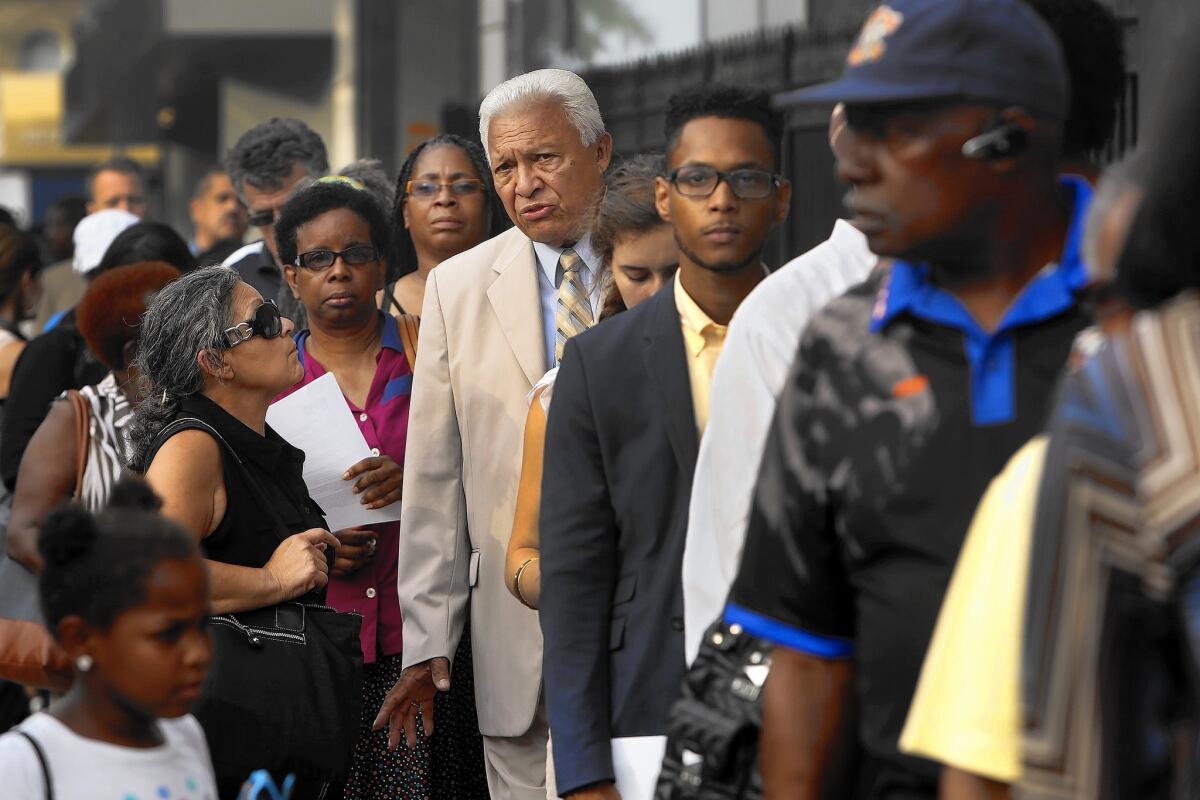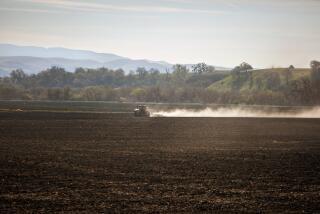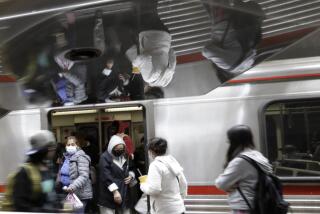South Bronx Legionnaires’ disease death toll rises to seven

South Bronx residents line up for a town hall meeting about the outbreak of Legionnaires’ disease.
The death toll from Legionnaires’ disease has risen to seven among 81 cases in the South Bronx, officials said Monday as they tried to calm the fears of increasingly nervous residents.
“There has been a loss of life so, yes, people are anxious,” said Renee Reeves, one of several hundred Bronx residents who packed a town hall meeting organized by politicians and health officials to address concerns of the community.
An audible ripple of surprise spread through the audience when city Health Commissioner Dr. Mary Bassett delivered the latest numbers during her opening remarks. The previous update from the city over the weekend had placed the toll at four deaths among 71 cases.
Bassett explained that the rise was expected because Legionnaires’ disease, which is a pneumonia-like sickness, can have an incubation period of as long as 10 days from the time of infection until symptoms are evident.
“There are still people out there who will be getting sick, not because the source is still there, but because it takes time for the symptoms to show themselves,” she said.
Legionnaires’ disease is contracted by breathing in mist or vapor that is contaminated by the bacteria. The disease does not spread from person to person.
The town hall meeting was at the Bronx Museum of the Arts, several blocks north of Yankee Stadium. The room was filled to capacity, with dozens more residents outside on the sidewalk waiting unsuccessfully to get inside.
“I want to know what’s going on,” said Olivia Taft, 75, of the South Bronx, one of those who got inside. “I’m concerned for myself and others.”
Bronx Borough President Ruben Diaz Jr. said the large turnout reflected the community’s worries. “We as Bronxites, when over 80 people are sick and seven have died, we aren’t at the level of panic, but anxiety is really high.”
Much of the worry stemmed from the fact that the city has not definitively identified a single source of the outbreak. Bassett said that the city believed with “a high degree of confidence” that the bacteria causing the outbreak was related to contaminated mist emitted from commercial cooling towers on roofs of buildings.
The city reached this conclusion because the 81 cases were dispersed over several neighborhoods in the South Bronx and investigators had not found a single common thread among those who were sickened, she said.
NEWSLETTER: Get the day’s top headlines from Times Editor Davan Maharaj >>
So far, the city has tested water in cooling towers at 17 buildings in the area of the South Bronx where people had been stricken, and found five of them contaminated with Legionnaires’ bacteria. As of Sunday, all five had been disinfected and cleaned and were no longer a threat to residents’ health, Bassett said.
Dr. Jay Varma, the health department’s deputy commissioner for disease control, said further investigation was needed to fully understand where the bacteria originated. “We don’t know if it was one tower or more towers responsible for the outbreak in your neighborhood,” he said.
Bassett repeatedly assured the audience that there was no cause for alarm. She said those most likely to contract the disease were the elderly, those with lung disease and people with other existing medical problems.
Key to curtailing the toll, Bassett told the residents, was early detection. She urged anyone with symptoms to seek medical care immediately. The disease is treatable with antibiotics if caught early.
Officials also addressed fears that the borough’s water supply had been compromised. This, Bassett said, was unfounded.
She said the contamination was identified in cooling towers, found only in commercial buildings’ ventilation or air-conditioning systems, and not in the wooden water tanks that store water for residential buildings.
“Our water supply is safe to drink, bathe in and shower in,” she said.
According to the health department, contamination was found in cooling towers at Lincoln Medical Center, a public hospital; Concourse Plaza, a shopping center adjacent to a private housing development; the Opera House Hotel; the Streamline Plastic Co.; and an office of Verizon, the communications company — all in the South Bronx.
Walking past the Opera House Hotel on East 149th Street, Sulma Arzu-Brown, 36, of the nearby Hunts Point neighborhood, said she was aware that contamination had been found in the hotel’s cooling tower. After hearing that the contamination could be related to air-conditioning systems, she said she and her husband cleaned out the filters of their units at home last weekend, just to be safe.
Legionnaires’ disease was first identified in 1976 when more than 200 people attending an American Legion convention at a Philadelphia hotel were sickened and 34 of them died.
The national Centers for Disease Control and Prevention estimates that 8,000 to 18,000 people are hospitalized with Legionnaires’ disease in the United States each year.
Diaz and other politicians said the city must move to regulate the maintenance of commercial cooling towers to avoid future outbreaks.
Haller is a special correspondent.
ALSO:
Maine Gov. Paul LePage’s candor fuels controversy — but he’s not backing down
Trump is the candidate everyone can name, and everyone has a name for him
New York uses executive order to investigate woman’s jail cell death
More to Read
Start your day right
Sign up for Essential California for news, features and recommendations from the L.A. Times and beyond in your inbox six days a week.
You may occasionally receive promotional content from the Los Angeles Times.






